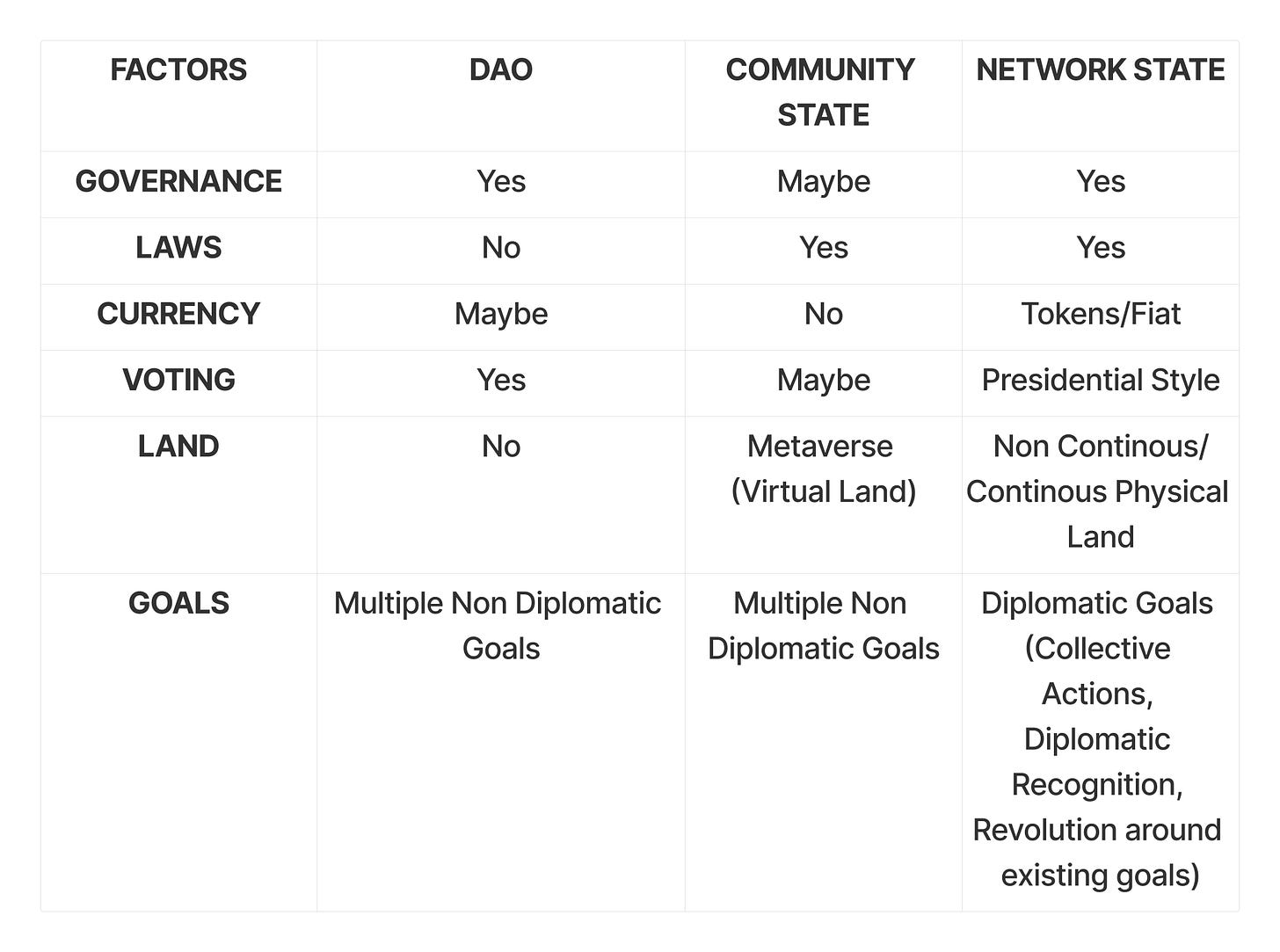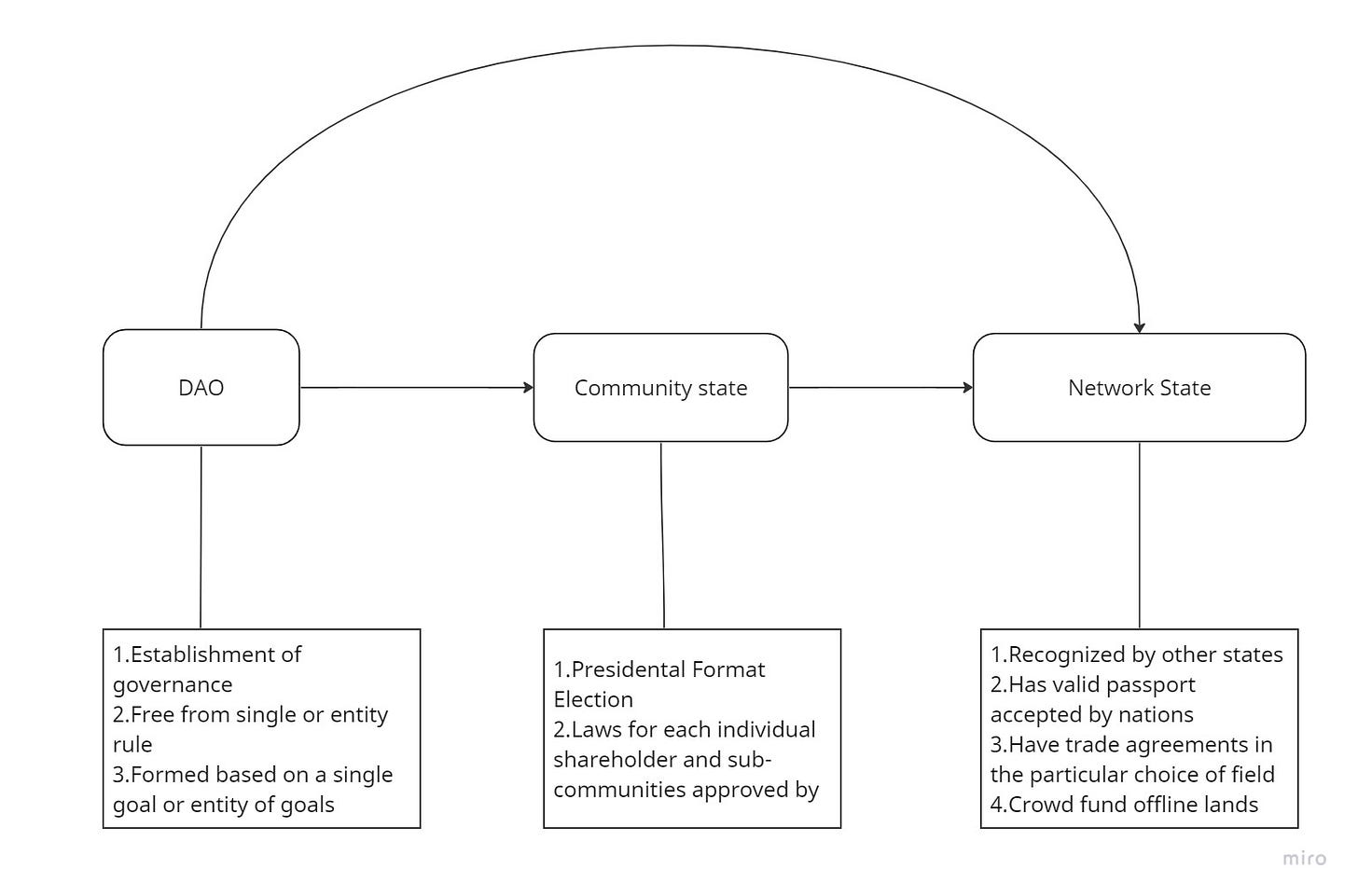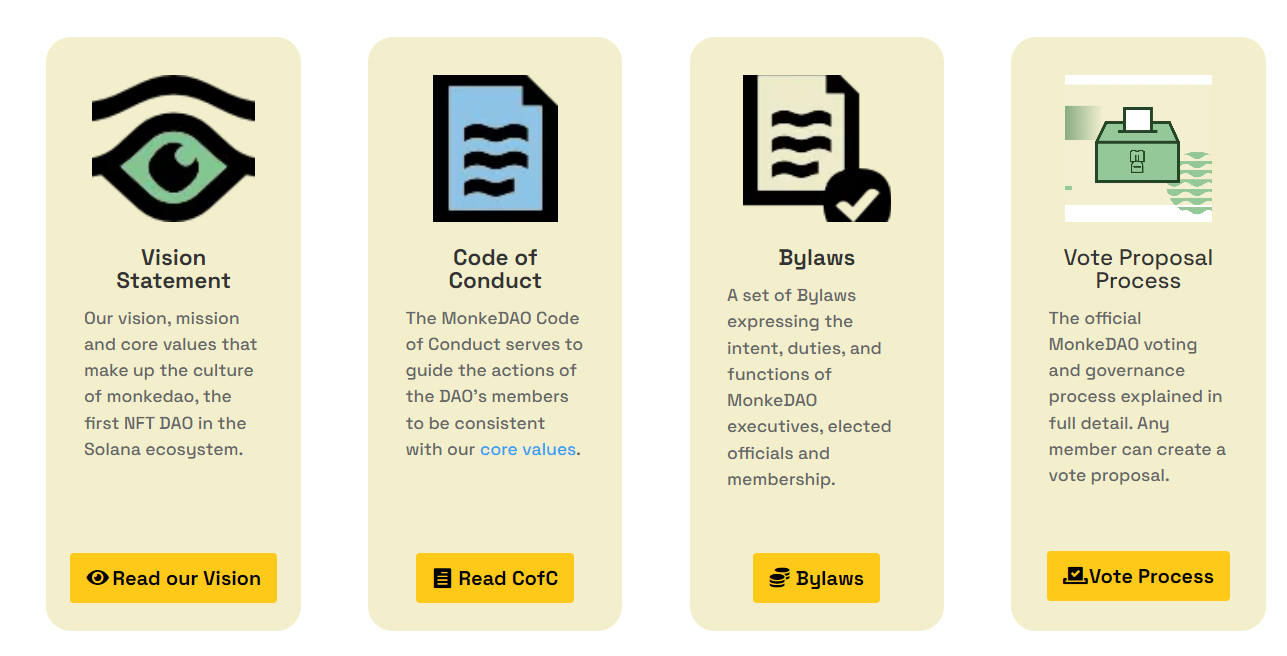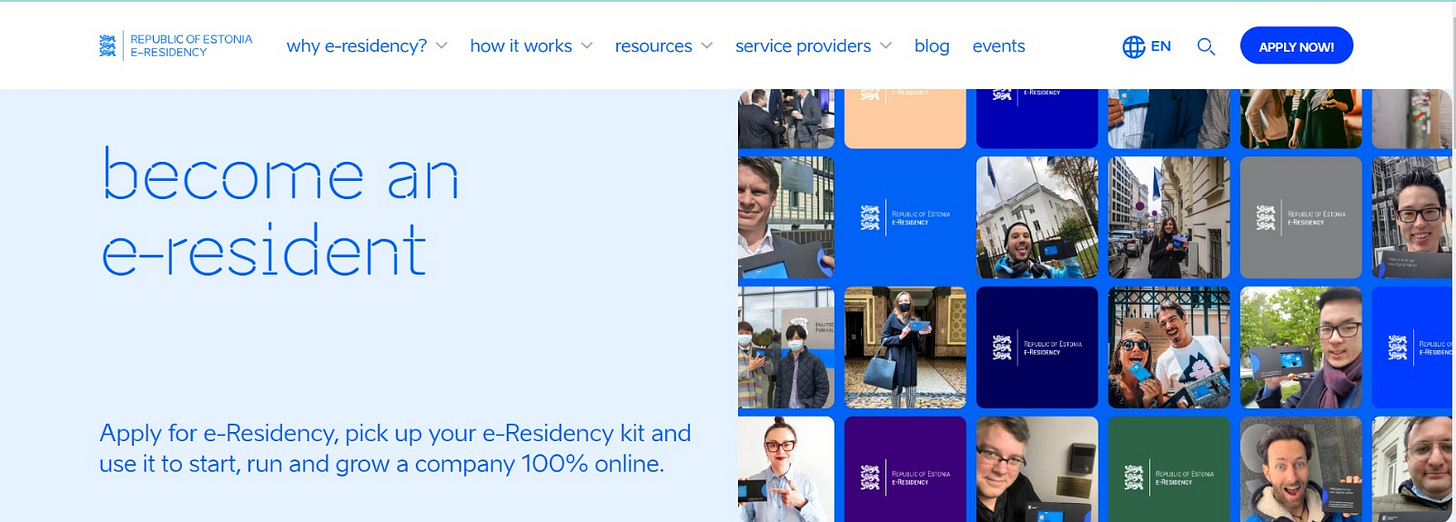Network State Paradigm on Solana's Blockchain Ecosystem
Important :- The article does not provide a summary or interpretation of Balaji's book on network state. Instead, it discusses the use cases and explains why Solana is the optimal choice for building this network state. INTRODUCTION
We are all aware of how blockchain has taken the world by storm, primarily due to its openness and anonymity. While it is decentralized and operates on a consensus mechanism determined by the ecosystem's stakeholders who decide on the well-being of their particular ecosystem, this somewhat resembles a country where an elected government works for the welfare of its people. However, there is a slight issue: no government today is transparent to its taxpayers. The elected bodies, although paid and voted for by the people of the nation, hold most of the decision-making power. This could lead to biased laws that may favour certain individuals or groups. Once the government bodies are selected, the people of the state have little to no say in or ability to repeal the laws that have been passed.
Many nations in the world impose travel restrictions or issue weak passports based on their foreign relations with other nations, as well as the quality of their travellers. If you come from a country with one of the weakest passports, it can be extremely challenging to travel to other nations, even if you are one of the most talented individuals in your own nation.
This issue can be quickly addressed by the concept of a network state. A nation initially built on the internet, without physical boundaries, can exist in the metaverse or within online communities, such as on platforms like Discord. These network states can comprise people from all around the world and later expand to include physical territories through acquisition.
Solana’s Societal Approach: Community first, Tech next
In today's fast-paced digital world, folks working with blockchains are constantly innovating with new ideas/technology. But even the best tech can go unnoticed if people don't support and use it. To truly succeed, Solana should combine lessons from the past(other chains) with active community support. This way, Solana can move from just being a cool tech to making a real difference in our digital society. The main idea? While many blockchains are technically advanced, it's the people and community behind them that really help them shine and make a change.
Community-Led Social Experiments: Beyond its tech glamour, blockchains are a thriving society with a shared dream. By nurturing a culture of community-driven social experiments, Solana can unlock a huge amount of collective insights. These can shed light on inclusive community nurturing, enriching Solana with a mix of yesteryear wisdom and real-time learning.
One such case is how Zeta Markets leveraged an NFT community to achieve its peak volume with new users with a community-driven social experiment. Reference
Finding moral grounds through open discussion: To figure out what's fair, we can learn from the past and chat about it in today's terms. People in the Solana community can share ideas about today's issues. By doing this, they can help make things more balanced in the Solana community through a collaborative approach. A notable example is how Mert from Helius has been addressing and quelling the FUD in the ecosystem by clarifying misconceptions through his tweets and podcasts.
Adaptive Protocol Evolution: One must focus on crafting protocols that are not just technically adept but also socially flexible. In an industry, with very little PMF, it is better to look into how protocols have acquired users in the past and how they can be helpful in the present. To achieve this in this ecosystem, it's better to align the protocol evolution with community necessities. Collective community feedback helps.
Community Over Products: Protocols on Solana are encouraged to look beyond just creating products; it's about fostering vibrant communities too. Insights from history can be a guide in building more inclusive and engaged communities, a key to blockchain success. It is all about prioritizing community building along with tech/product innovation.
Again teams like Tensor and Backpack have leveraged communities to become one of the many successful existing protocols on Solana today.Narrating the Digital Saga: As Solana tackles these issues, sharing stories about the historical context of these challenges can help the community understand and engage better. This storytelling can guide informed decisions and collaborative problem-solving, ensuring Solana's tech journey is enriched with cultural and moral insights.
By embracing a community-first approach alongside its tech-driven core, Solana can easily absorb the essence of a network state, creating a lively ecosystem where learning from the past fuels today's innovation. This approach can position Solana as a leader in merging the old with the new, forming a blockchain community that's strong, inclusive, and ready for the future.
Differences between a DAO, Community State, and a Network State
Pathway from a DAO/Community to Network state
Current Scenario of existing community states:-
SUPERTEAM:-
Superteam is an exclusive DAO comprised of exceptionally talented individuals who gain access to this exclusive community based on their contributions to the development of Solana. Membership in Superteam can be achieved through two primary avenues: participation in bounties or winning Hackathons organized by Solana. The primary mission of Superteam is to enhance the development process within the Solana ecosystem while simultaneously providing opportunities for community members to earn income through freelancing.
The Main focus of Superteam is to improve the development process in Solana while creating earning and freelancing opportunities for people in the community. The Dao has created earning opportunities for various groups of classes such as
Content creators
Developers
Writers
Designers
Event Managers
Advocates
The DAO presently possesses a GDP of $1.7 million, signifying that approximately $1.7 million in grants and bounties have been earned by the exclusive members of this DAO.
MONKEDAO:-
MonkeDao was initially formed by SMB holders (the SMB collection was created by Jimmy). The community was strongly influenced by these holders, and its primary objectives were to organize in-person events and develop tools within the Solana ecosystem. Their aim was to advance not only the Solana ecosystem by creating tools and offering legal advice to projects but also to establish a community of highly skilled individuals who could contribute to both the ecosystem and the DAO. The project has already evolved from the phase of a DAO and is currently in between the phase of community state and DAO. The MonkeDAO holds the IP for the SMB NFT project and any sale of the royalties is given to the Monkedao community, which is further used for the development of Monkedao and its supported applications and events.
The MonkeDAO currently has two NFT projects
GEN 2 (The highest ownership with voting rights)
GEN 3 (Access to the DAO)
A Global network
The map below describes a borderless community that shares the same ambition as the Dao. Holding the NFT provides access to resources. This isn't very different from a network state claiming authority over borderless lands. However, Monkedao isn't a recognized entity yet. They have established a governance model similar to a presidential election. This allows them to choose voice entities dedicated to improving and managing the Dao. Community members can create laws for the community's benefit, which must reach a certain number of votes from the community to become valid laws.
Currently, the Gen 3 map is in the development phase and it will be integrated soon with the Gen 2 map. So the numbers below are only for Gen2 holders.
A growing Capital through Potential investments from Monke Ventures
As part of the community, if you are a contributor you are obliged to raise capital or get funding from the Monke Venture. This amount is given by the community based on the votes received by trusted builders/content creators/writers etc., who can bring a change to the welfare of the community.
MonkeDAO Leadership Structure:
MonkeDAO is governed by a diverse and dedicated leadership team consisting of nine members, comprised of a Chief Executive Officer (CEO), four appointed executives, and four elected executives. This dynamic structure is designed to ensure that the community's vision and interests are effectively represented and executed.
Chief Executive Officer (CEO)
Appointed Executives(4)
Elected Executives(4)
Each member of the leadership team, whether appointed or elected, is dedicated to serving the MonkeDAO community. Their primary duties include:
Advancing the Vision: All leaders are committed to realizing the shared vision of the community, working tirelessly to ensure its alignment with MonkeDAO's goals and objectives.
Proposal Execution: Leaders are responsible for executing proposals and surveys that have been approved by the community, implementing changes, and ensuring that the DAO's operations align with these decisions.
Entity Maintenance: Leaders actively contribute to the maintenance and sustainability of MonkeDAO as a thriving and resilient entity, safeguarding its long-term viability.
Committee Representation: As representatives of the community, leaders actively participate in DAO committees, engaging in discussions, and advocating for the interests and values of MonkeDAO's diverse membership.
POINTERS FOR A NETWORK STATE:-
Capable group for collective action
A set of active contributors/Participants who are capable enough to make collective decisions that align with the ideology of a network state. This is necessary to push the goals of a Network State and doesn't create chaos among the people.
Eg:- Council for a country that takes action
Conduct an On-chain Census
It is equally important to maintain and identify different people joining the network state equivalently like a country to list it among the set of nations. This also helps in analytical decisions in the future to manage and grow the network state.Also maintaining them in a chain with good liveliness/uptime to keep in sync digitally is a necessary factor.
Path to Gaining Diplomatic Recognition
Diplomatic recognition is a continuum and could be a multi-decade-long progress. Even countries like Taiwan weren't able to get recognized as a nation by a few countries.
Instead, With good digital recognition, we have seen that the land is already in deals with the cloud. This could be extendable from companies to crypto communities.
It could also be physical recognition with land rights or by occupying SEZs (Special Economic Zones)
Money, cohesion, and persistence is the key to getting recognized over the long term.
One such way could be the case of Estonia
Estonia has an e-resident program that allows individuals to become digital residents of Estonia, thereby giving them the advantage of digital residency, which is one such way to get diplomatic recognition from a nation. Via this, e-residents can conduct business in Estonia, 1000 miles away. They can cryptographically sign transactions online and get them settled under a recognized nation.
The vision correlates very closely to a network state by providing individuals from different nations to conduct business in a completely different land. Thereby making them (individuals) borderless.
Solana's Unrivaled Advantage in Network State Management"
Solana is a preferred choice for maintaining your on-chain census of network state for several compelling reasons. First and foremost, it offers a cost-effective blockchain platform with minimal gas fees. This means that you can perform transactions and operations on Solana without worrying about exorbitant fees, making it a budget-friendly option.
One of Solana's standout features is its exceptional speed and high Transactions Per Second (TPS) rate. This rapid processing capability ensures that your network state updates are processed swiftly and efficiently. Additionally, Solana has localized fee markets, optimizing transaction fees based on demand and usage, further enhancing cost efficiency.
Solana's reliability has been steadily improving over time, with multiple clients in development and a diverse network of Validator nodes. Unlike some other blockchains, Solana's Validator nodes are not overly concentrated in specific geographic areas or hosted predominantly on a single cloud service like AWS. This decentralization contributes to a higher Nakamoto coefficient, a measure of blockchain decentralization ( coined and defined by Balajis himself).
Beyond its technical merits, Solana boasts one of the most supportive and active communities in the blockchain ecosystem. This community has demonstrated its commitment by holding and supporting Solana even during challenging times, such as price fluctuations or network outages. This sense of community provides confidence in the platform's long-term stability and growth.
Moreover, Solana actively promotes the development of tools and solutions for maintaining an on-chain network state census. Initiatives like the Hyperdrive hackathon, which includes a dedicated track for network state tooling, showcase Solana's commitment to advancing this crucial aspect.
In summary, Solana offers a compelling combination of low fees, high speed, decentralization, community support, and ongoing development efforts that make it a preferable choice for maintaining your on-chain census of the network state.















